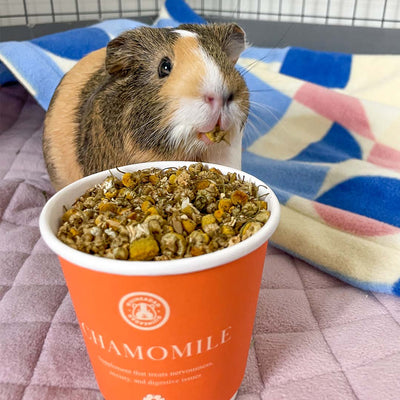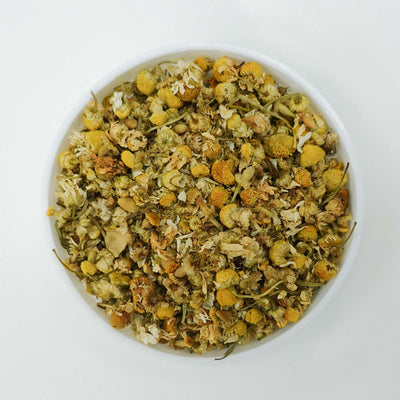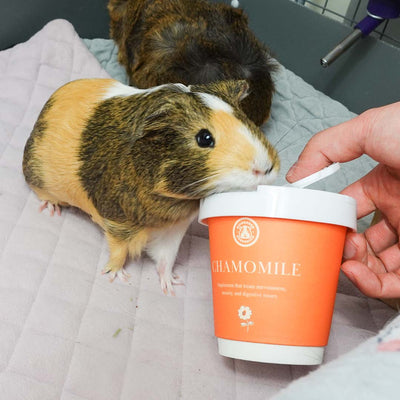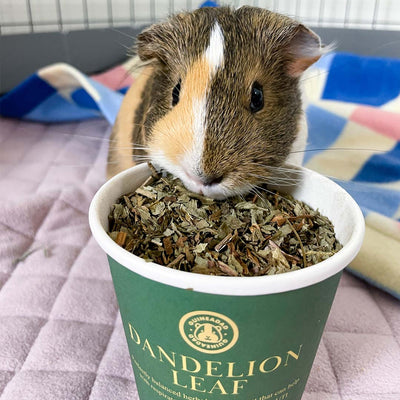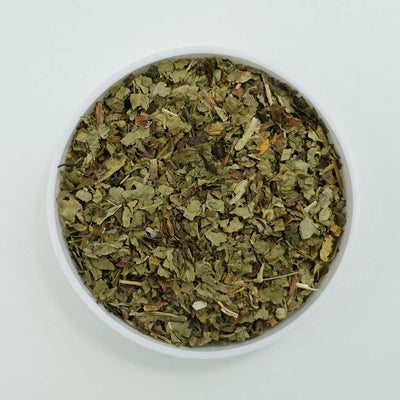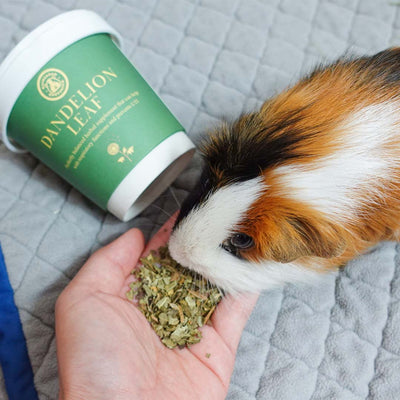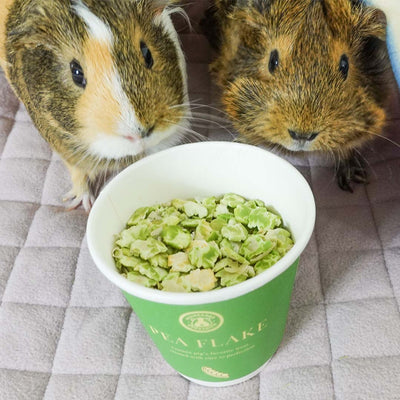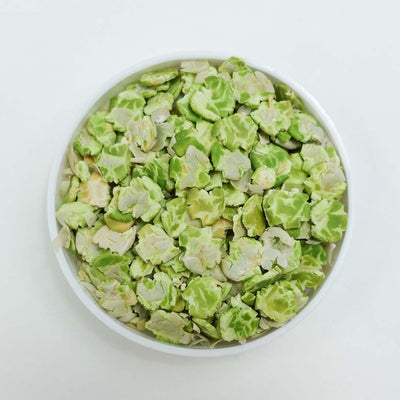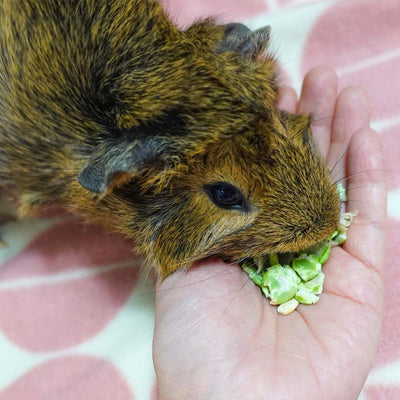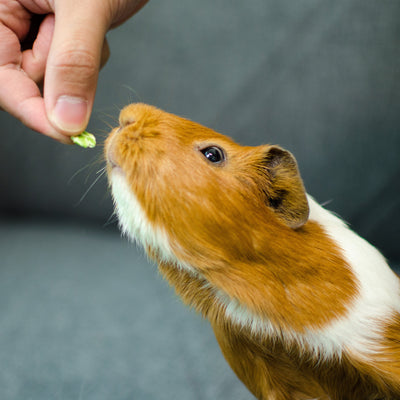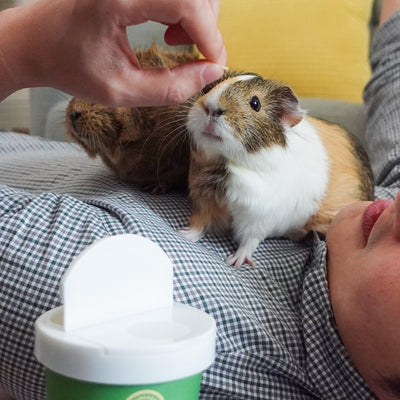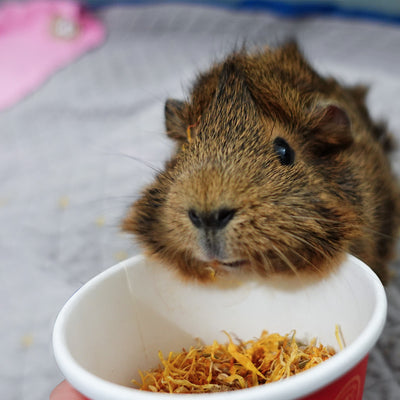The simple answer is yes, guinea pigs can get eye infections and unfortunately, they can be pretty common. We know, it can be pretty devastating realizing that those cute little eyes of theirs can be affected by infections, but that’s why it’s important to learn about all the symptoms and ways you can try to prevent those guinea pig eye infections!
Before we get into symptoms, the different kinds of guinea pig eye infections and how they can be treated, let’s first discuss what normal, healthy guinea pig eyes look like!
Normal, healthy guinea pig eyes
Guinea pig eyes are usually clear and unmarred, and they’re also bright! Their eyes also stick out a little bit or protrude from the socket, which makes them look extra cute! As a piggy parent, you may already know this, but many guinea pigs sleep with their eyes open. Some even call it a “death nap.” They rarely blink, and you might not catch it when they do.
In general, guinea pigs don’t have the greatest eyesight, but they are able to distinguish colors pretty well, which helps them identify foods and other objects in their living environment, and you!
Guinea pig eye colors are categorized into three main colors” dark, dark with ruby cast, and pink. Dark can be divided up further into brown, black, or blue. It’s important to note that no matter what color their eyes are, healthy ones should reflect red when in strong light.
Eye discharge is normal for guinea pigs, and in fact, they use eye discharge to clean their faces. The liquid their eyes secrete is a creamy white color, and they’ll use their front paws to rub it onto their face. This occurs a few times a day!
Abnormal, unhealthy guinea pig eyes
Many times, abnormalities in the eyes are indicative of something else going on in the body as well. There are several things to look out for, including crusty eyes, watery eyes, cloudy eyes, receding eyes, overly protruding eyes, and ulcerated eyes.
There are a few things that these symptoms could be hinting at, such as upper respiratory infection (which you can read in more detail here), injury on the surface of their eyes, abscess, dental problems, dehydration, cataracts, diabetes, or other conditions.
Corneal Injury (Eye Injury)
What kinds of injuries can happen to guinea pig eyes? A watery or even a cloudy eye could be a result from things like cuts or other types of irritations to the eyes. As you can imagine, getting poked in the eye with hay is something that could happen due to how much time they spend munching on their hay.
Sometimes they will get the hay in their eyes and you might be able to see it sticking out at the rims of their eyes. To remove it, you could take them to the vet to ensure that it’s done safely and properly!
In general, if you notice other things like discoloration or clouding in the area, it’d be a good idea to get your vet’s opinion on how to proceed and how to treat it.
Conjunctivitis
As we know, guinea pigs do not blink very often, and their eyes are open more often than not! This means that conjunctivitis is something that can easily afflict your guinea pig’s eyes. This occurs when there is inflammation of the membrane that lines the eyelids. This, of course, is caused by bacterial infection.
There are also some other causes of this eye disease, and some of them aren’t anything that would be super obvious links to the eyes! Things like dental issues can be an underlying cause. The most common way that it occurs is through the presence of dust, whether that is dust from their beddings that are made of wood shavings or paper, or dust from their hay.
The easiest way to prevent dust being the cause of conjunctivitis is to keep their living environment as dust free as you possibly can. When it comes to reducing dust from their paper or wood shavings bedding, you can utilize GuineaDad Liners or GuineaDad Premium liners, which are made of soft fleece that use fibers coated in antibacterial agents.
You can reduce the presence of hay dust by feeding your guinea pigs with the GuineaDad Hay Bar and GuineaDad Hay Boxes. These both keep the hay as contained as possible, which in turn reduces the amount of dust that is produced by the hay piles laying around and being tread upon by the piggies. Make sure to spot clean their cages in general by vacuuming up dust, poop, and stray debris.
Cataracts
Just like in humans with cataracts, it involves the opacity of the lens of the guinea pigs’ eyes. Cataracts can be inherited, or can come from disease or aging. Also similar to some humans, older guinea pigs’ eyes will gradually cloud over. If it happens quickly, it could be a sign of diabetes in your guinea pig.
Entropion
This occurs when the eyelashes are turned in or ingrown, which can irritate the eyes. This is mostly common with newborn guinea pigs, and it can result in the eye turning white and developing an ulcer. In particular, Teddy, Rex, and Texel breeds tend to be more prone to this condition than others, but those who are affected can outgrow it after a few weeks.
The irritation that they experience can be soothed with an eye lubricant, but it’s important to always consult your veterinarian and to not to do any self-diagnosis or utilize medications without consulting them first!
Fatty Eye or Pea Eye
This is when there is a protrusion of the conjunctival sac, and it’s believed that this is genetic! Pea Eye, also referred to as Fatty Eye by vets, are types of conjunctival swelling. This condition is thought to be caused by a buildup of fluid because of poor circulation.
Treatments for this also include anti-inflammatory eye drops and antibiotics. As mentioned before, it’s important to always consult your piggy’s vet before having your guinea pigs take any kinds of medications or before using treatments on them. These can also be removed with laser surgery if they are interfering with your piggy’s vision.
Upper Respiratory Infection (URI)
We have a full blog post on the topic here if you’d like to read about it more in depth, but crusty eyes can be a sign of upper respiratory infection. Of course crusty eyes are not the only symptom, but they could also suffer from a congested nose, lethargy, and lack of appetite.
Upper respiratory infections in guinea pigs are treated with antibiotics, but it’s important that you make sure to see a veterinarian to make sure that you know all the options on how to help your guinea pig.
Remember, don’t diagnose your guinea pig yourself!
We know, worry and concern for your guinea pigs can put you into a little bit of a panic, but it’s important to get a professional medical consultation before you try out any treatments that you read about! Make sure to do your own thorough research, and consult with your vet to see what the next steps are to help your piggies and their eyes.
Once you have an action plan that you've put together with your vet, you can also look into non-medicinal ways to help your piggy. Check out the GuineaDad Chamomile Organic Herbal Treat as a tasty way to start!










